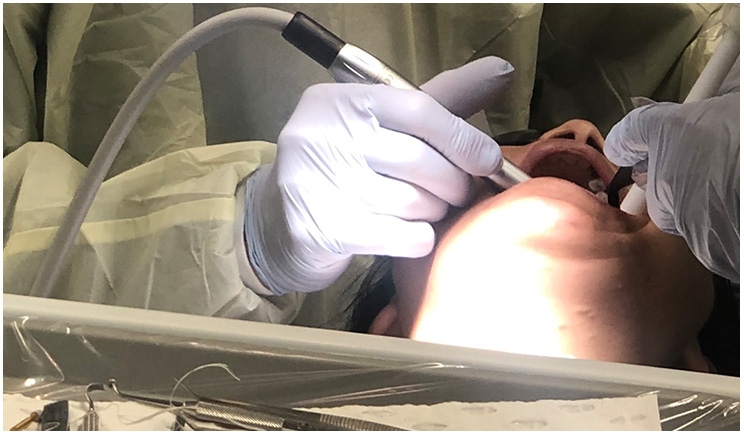
Australians have a saying that they live in “the lucky country.” It can seem to the outside world that we are blessed with sun-kissed beaches, a “no worries, mate” attitude, and the perfect lifestyle.
Sadly, there is very little that is lucky where Australia’s oral health is concerned. There are significant problems for patients attempting to access affordable treatment. Early in 2019, a report from the highly respected policy body the Grattan Institute highlighted how 2 million Australians (8% of the total population) delay or go without dental treatment every year due to cost, with the poor and disadvantaged most likely to miss out.
While more than $10 billion dollars is spent on dental services every year, a recent report from the Australian Institute of Health and Welfare highlighted how the number of adults foregoing dental care due to cost is increasing. It is common for people to wait more than one year for treatment in the public dental system (government-funded dental services). Access to treatment in rural and remote areas is an even greater challenge.
With Australia sprawling over about 8 million square kilometres, attracting dentists to work in remote areas is a constant struggle.
As the peak body for dentistry in Australia, the Australian Dental Association New South Wales (ADA NSW) has a huge role in advocating for improved oral health services, particularly for vulnerable Australians. Representing about 4,500 dentists and undergraduate dentists, ADA NSW is Australian dentistry’s largest state-based organization and is uniquely placed to offer proactive and realistic solutions to oral health inequalities in Australia, which is where Filling the Gap comes in.
Established by ADA NSW, Filling the Gap’s goal is to improve the health and quality of life of vulnerable people with poor oral health through the provision of pro bono dental treatment, education programs, and advocacy. A registered charity, its programs prioritize those most in need who are unable to access mainstream dental services.
Filling the Gap works with several partner charities, covering patients from diverse backgrounds. These include patients suffering from drug and alcohol addictions and homelessness, those who are medically compromised, and those suffering from mental health concerns. It additionally partners with charities supporting Indigenous patients, many of whom face huge challenges overcoming health and social inequalities.
The program also works with organizations assisting refugees and asylum seekers. Some of these patients may have come to Australia in highly desperate circumstances. They may be waiting for visa applications to be processed, which can often take years due to laborious processing times. People seeking asylum is Australia don’t have any access to government-funded dental services. Many have very poor oral health due to poor diet, a lack of daily oral health care, and time living in communities without water fluoridation. Many may have not seen a dentist for years, if at all.
For the past 10 years, ADA NSW members, in partnership with the Australian Red Cross charity, have provided pro bono treatment to asylum seekers. More than 1,000 patients have been seen, with treatment worth more than $500,000 provided.
Charities refer patients to Filling the Gap’s regular dental rescue days, which take place throughout the year either at private clinics or at the ADA NSW’s headquarters in Sydney. The days are manned by a team of volunteer dentists, dental assistants, oral hygienists, and administration staff. Treatment provided on the day is primarily pain relief and may include fillings, extractions, and periodontal care. If any followup treatment is needed, patients can be seen again and are encouraged to seek assistance via other means.
Filling the Gap also incorporates an “Adopt a Patient” scheme, which sees volunteer dentists and their staff paired up with a patient in need of more complex dental care. The practice will then “adopt” the patient and complete the course of treatment.
Since Adopt a Patient launched under ADA NSW’s organization in 2019, the reaction from patients seen by the program has been positive. Many have said the treatment has vastly improved their overall quality of life, providing a sense of heightened dignity and self-esteem and, of course, relieving pain.
Over the past financial year, our network of volunteers provided pro bono treatment to more than 300 people. This amounted to more than 600 appointments for patients with a total treatment value exceeding $320,000.
The program obviously wouldn’t exist without the generosity of dentists giving their time. Many of the dentists involved are recruited through word of mouth or previous involvement with ADA NSW benevolent activities. Several have described their sense of pride in being involved in the scheme and being able to help patients in need. Others have also enjoyed the sense of teamwork and the opportunity test to their professional skills.
Filling the Gap now has its own website, and ADA NSW promotes forthcoming dental rescue days through social media and other means. More dental rescue days are being arranged, and efforts to attract more volunteers are being arranged.
Filling the Gap will not solve the huge inequalities in Australia’s dental system by itself, nor does it claim to offer a magic wand to transform the lives of patients seen under the program. It will, though, ensure that vulnerable members of Australia’s society are able to access vital dental health treatment. With oral health key to overall health, it is one way of ensuring better all-round health outcomes where they are desperately needed.
Dr. Jonas has been a rural practitioner in the Australian state of New South Wales for more than 30 years. He is vice president of the Australian Dental Association NSW and a member of the ADA NSW Council, and he is chair of the board of the Filling the Gap program.
Related Articles
Most Australians Face Gaps in Oral Healthcare Knowledge
Tracker Minitors Australia’s Progress Toward Oral Health Goals
Flying Dentists Get Online Resources Down Under











